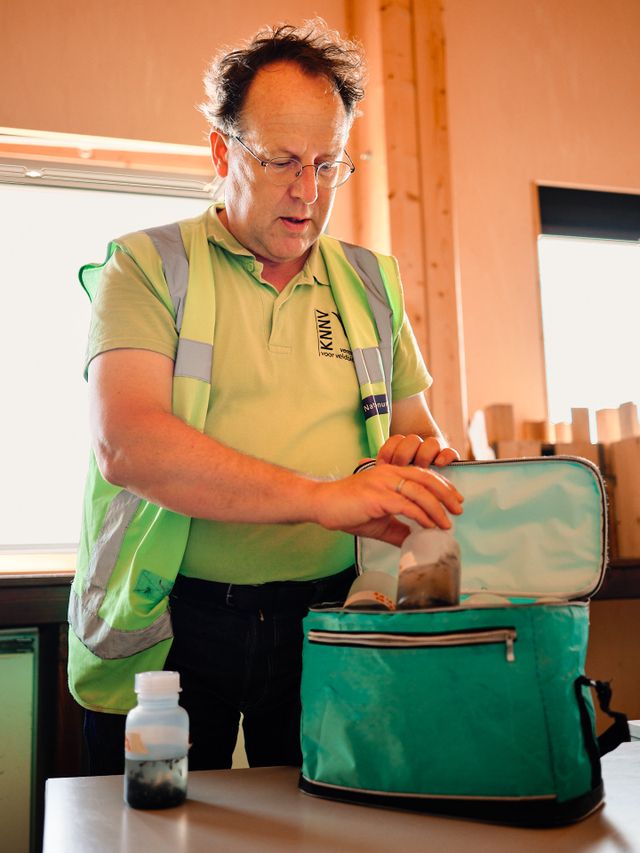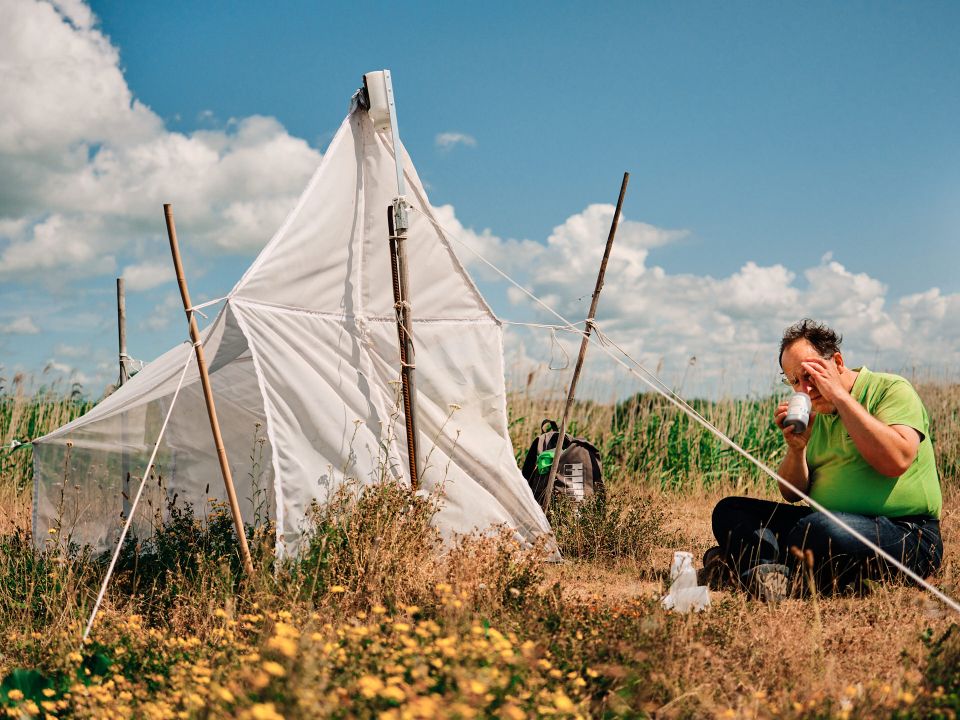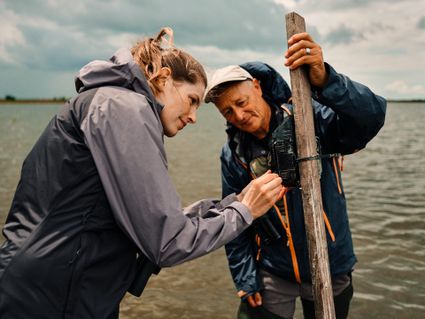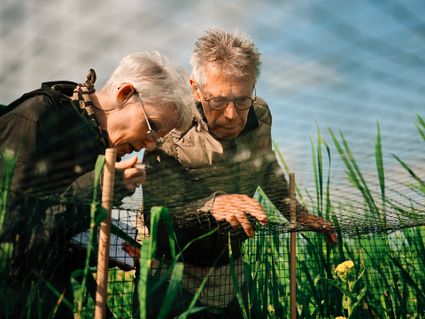Flying Colonists: insects on Marker Wadden. - Insect researcher Arjan van der Veen studies which species stay and leave.
Researcher & urban ecologist Arjan van der Veen is a real insect man. 'Insects fascinate me immensely: their diversity, their intriguing role in the ecosystem, how they cooperate with each other. For me, the fascination started with the bee. The buzzing sound of the bees on the heath made a deep impression on me as a child. I became a beekeeper as a result, by the way.' Together with a team of biologists, Arjan studies insects caught on Marker Wadden, part of National Park Nieuw Land.
“ We have even discovered new species that did not occur in the Netherlands before! ”
The insect research Marker Wadden began in 2018. In addition to measuring insect numbers, researchers are looking at which species are settling on the new island and which are disappearing again. 'Insects are a good measure to assess an ecosystem,' Arjan says. 'Marker Wadden was constructed in 2016, so it has only been around for a very short time. This study is a perfect opportunity to monitor the rate of colonization of an area by insects. Gradually, we also investigated different species of insects. We even discovered new species that did not occur in the Netherlands before!" says Arjan enthusiastically. 'A small wasp and a special kind of fly.' Another special newcomer is the moss bumblebee. 'How it got here, we don't know. I suspect a few queens blew over with a storm. Or parts of nests came along somehow. Moss bumblebees are found in North Holland, among other places.'

Not all stay
Remarkably, not all species of beetles, beetles and flies 'stick' to Marker Wadden. Arjan: 'That's actually what I personally find most fascinating: how does the area develop, how quickly do new species colonize the terrain and how do they spread? And how mobile are they? Plants and shrubs change and a habitat is created for certain species. At the same time, therefore, species are disappearing, such as the ruffled ladybug, which was previously common but is now barely found. This gives us insight into the speed at which nature adapts and how different species respond to changing conditions.’
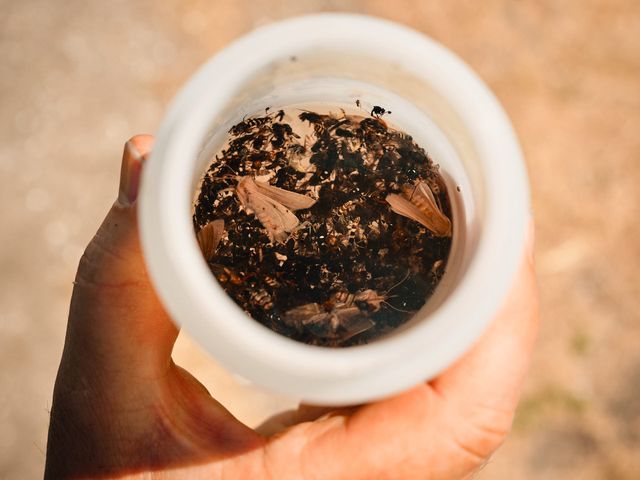
Catching with a tent
No, Arjan and his colleagues do not lie in the bushes with a notepad to count the insects. 'We use malaise traps, which catch insects as they fly. That way you take a kind of sample, a representative selection. Malaise traps are a kind of tent made of mesh, which catches insects. Flying insects, such as beetles, flies, mosquitoes and wasps, end up in the trap. They follow the mesh upward and fall into a jar of alcohol. The alcohol kills the insects and preserves them well for further analysis. We empty the jars weekly. The yield goes to WUR (Wageningen University & Research) a few times a year for leaching and weighing.
After weighing, they go back into the alcohol and come back to Lelystad to be classified by species group. Sometimes there are only 70 critters in them and sometimes 2,700. We also once had a jar with 6,000 flies! It is an intensive process where we try to further identify the insects. By the way, we do this with the help of volunteers!
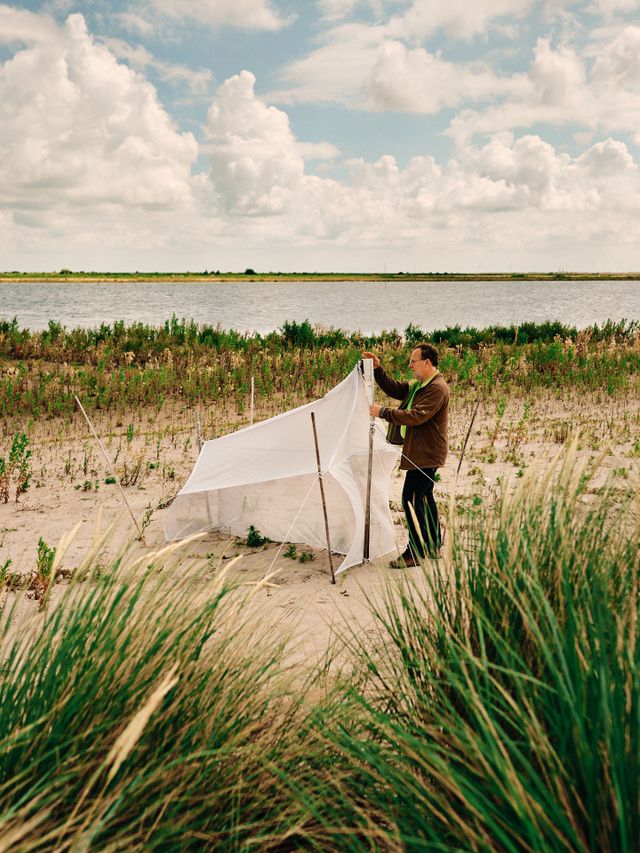
Predict and manage
Marker Wadden offers a unique opportunity to study the development of nature up close. It is a new area located far from the coast and offers us the chance to gain a lot of knowledge for the future. Arjan: 'The research on Marker Wadden focuses on measuring the trend in insect populations. In trend research, we look at how things change over time. We want to understand whether something is increasing or decreasing, whether it is increasing or decreasing. By studying trends, we can predict how something might develop in the future. That's very interesting! It allows us to determine what (management) measures are needed to keep the ecosystem in balance and preserve biodiversity. So this research is not only related to insects themselves, but also has implications for other species, such as birds that depend on insects as a food source.
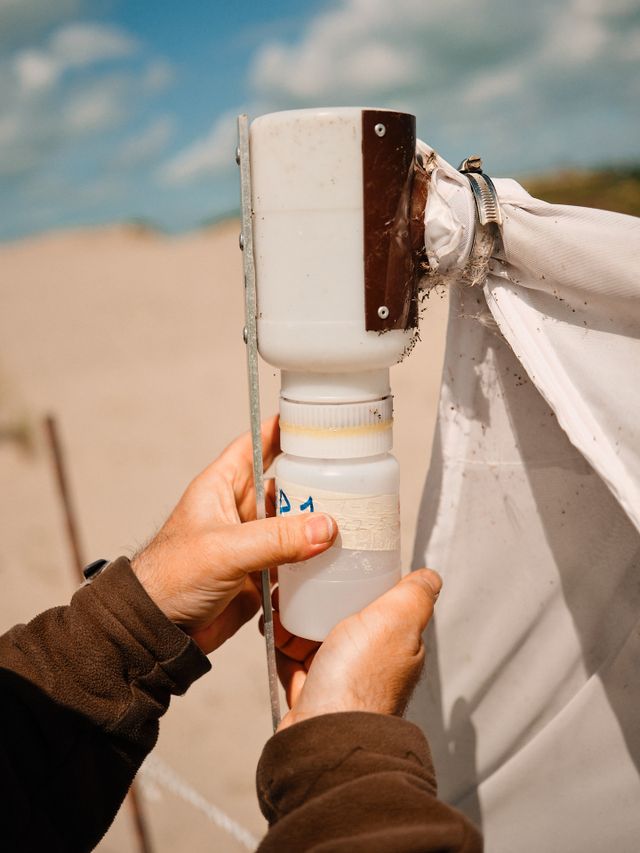
For visitors
It is possible that as a visitor to Marker Wadden you may encounter a malaise trap. They are in four places, two are in the clay area and two on the South Beach, just behind the dune. You can see the traps on the clay, there is also an information board explaining the research. Tip from Arjan: 'Write down your observations! Many people write down which birds they see, but it is also fun to keep track of all the bumblebees, butterflies and beetles you have seen. Who knows, you might spot something special.'
